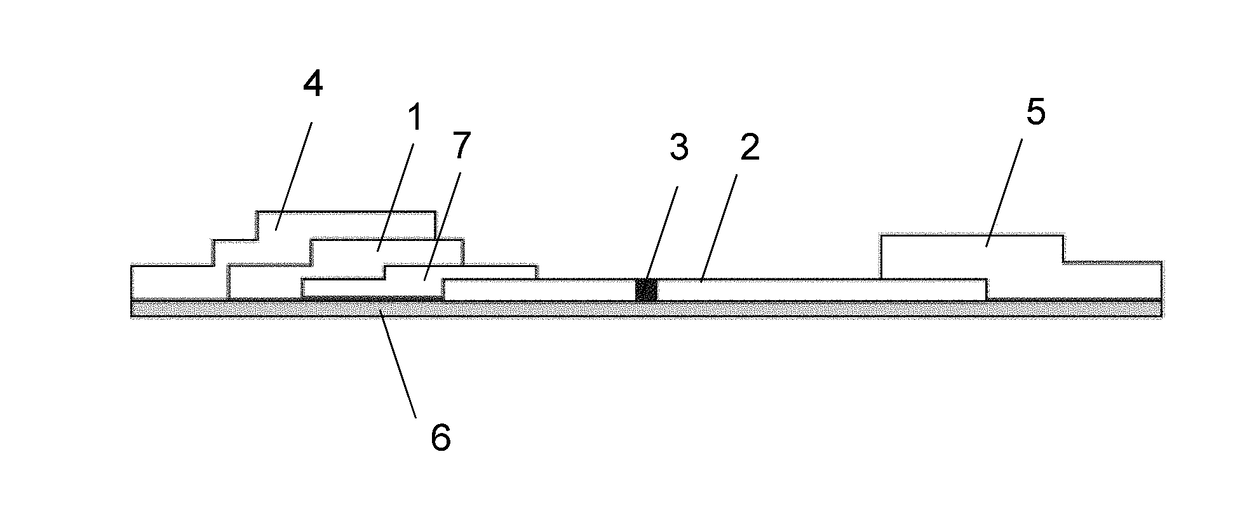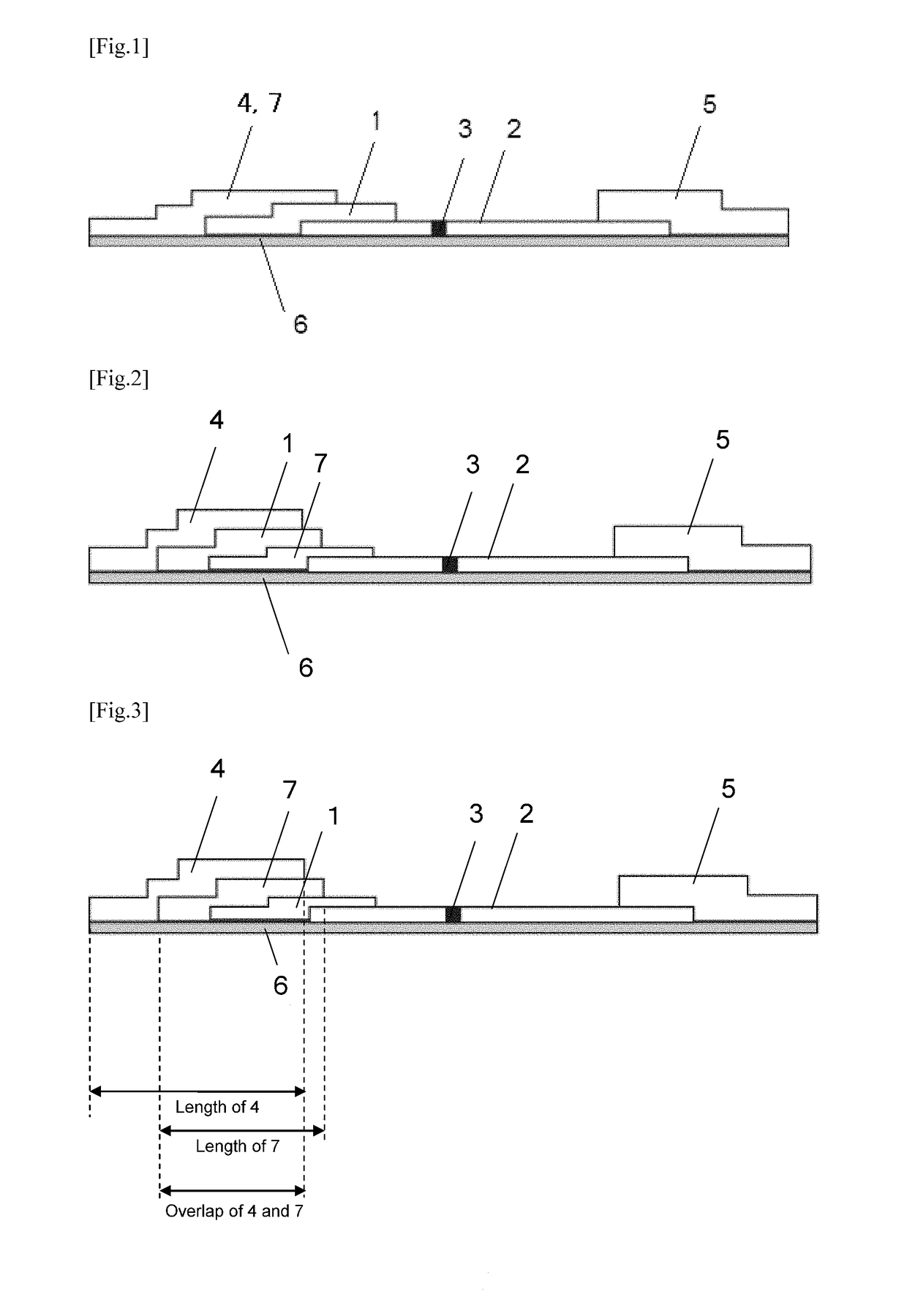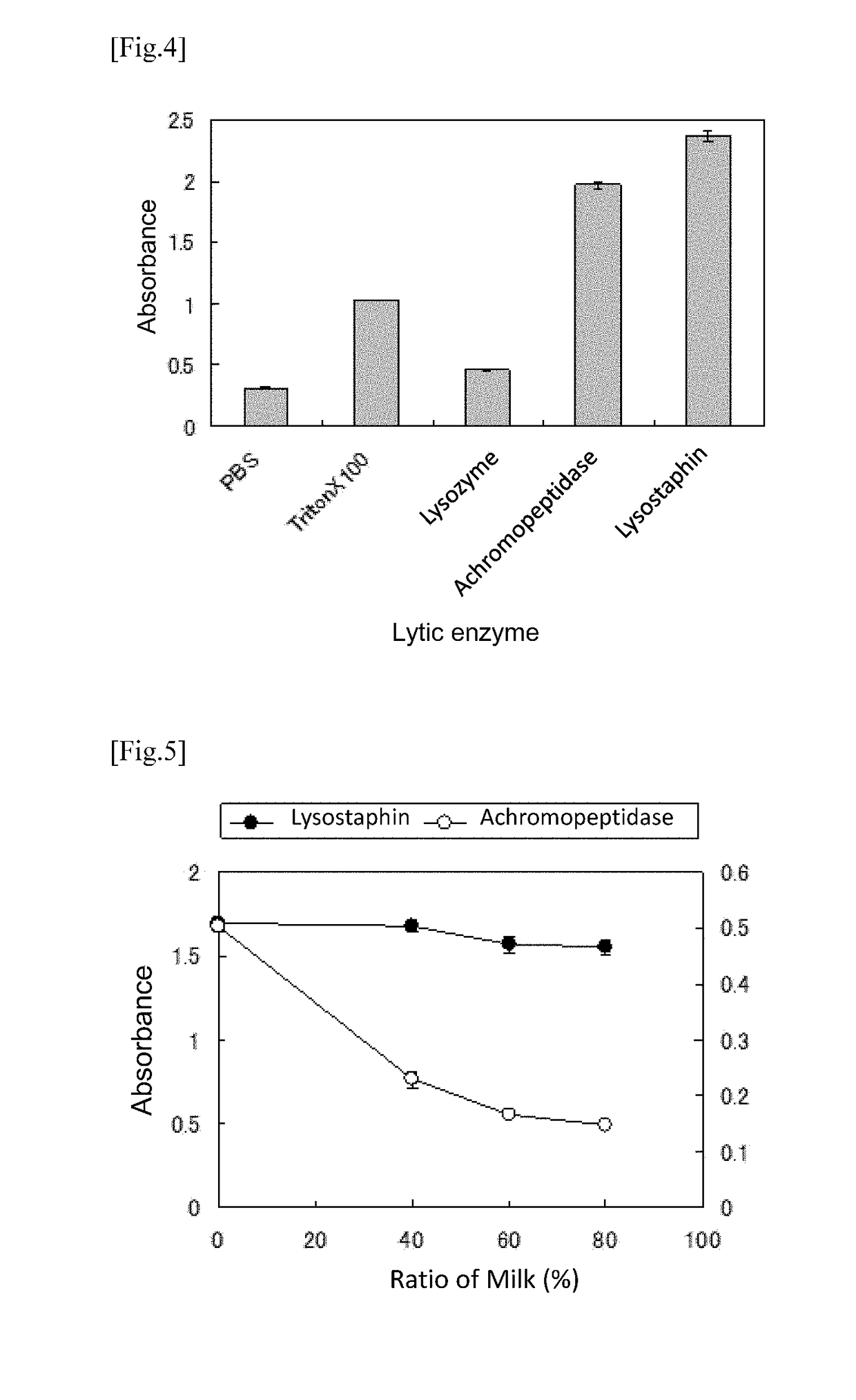Method for detecting specific substance in milk
a technology of immunochromatography and milk, which is applied in the field of immunochromatographic method and immunochromatographic device for detecting a substance in milk, can solve the problems of contaminated milk, reduced lactation amount, and huge economic losses such as medical treatment and milk price penalties imposed on dairy farmers, and achieve the effect of quick and convenient detection on si
- Summary
- Abstract
- Description
- Claims
- Application Information
AI Technical Summary
Benefits of technology
Problems solved by technology
Method used
Image
Examples
example 1
Confirmation of Liquid Flow of Milk Sample in Immunochromatographic Method
(1) Preparation of Immunochromatographic Device
[0078]The immunochromatographic device shown in FIG. 1 as a schematic sectional view was prepared as follows.[0079](a) Preparation of Ribosomal Protein L7 / L12 Antibody
[0080]As the antibody to be labeled with gold colloid, Staphylococcus aureus ribosomal protein L7 / L12 monoclonal antibody was used. According to the method described in International Patent Publication WO00 / 06603, Example 5, the Staphylococcus aureus L7 / L12 ribosomal protein was obtained, and the monoclonal antibody was prepared by using this protein. As the monoclonal antibody, a combination of two kinds of monoclonal antibodies (SA-1 and SA-2) that can simultaneously bind to different sites of the aforementioned L7 / L12 ribosomal protein.
[0081]It was confirmed that the combination of the monoclonal antibodies SA-1 and SA-2 react with the ribosomal protein L7 / L12 of Staphylococcus aureus, but does no...
example 2
Detection of Staphylococcus aureus in Milk by Immunochromatographic Method
[0095](1) Preparation of Immunochromatographic Device
[0096]According to the method described in Example 1, the immunochromatographic device shown in FIG. 1 was prepared. As the member serving as the member 4 for sample addition and the member 7 for removal of fat globules (third part), GF / DVA mentioned in Table 2 was used.[0097](2) Test
[0098]Measurement for cow's milk using the immunochromatographic device was performed as follows. Each of fresh milk samples 1 to 6 (100 μl) was put into a microtube, an additive solution (150 μl 1% Tween 20, 0.05 M NaCl, 0.1 M MOPSO as final concentrations, pH 7.5) was added to the sample and mixed. The aforementioned immunochromatographic device was immersed into the above mixed solution from the member 4 for sample addition, the device was left standing at room temperature for 15 minutes to carry out chromatographic development by the lateral flow method, and then whether the...
example 3
Measurement with Milk at High Concentration by Immunochromatographic Method
[0104]The immunochromatographic device shown in FIG. 1 was prepared by the method described in Example 1, and liquid flow was confirmed with changing ratio of milk in samples. As the member for sample addition, those mentioned in Table 3 were used. A fresh milk sample and an additive solution were mixed at various ratios (additive solution contained 1% Tween 20, 0.05 M NaCl, 0.1 M MOPSO as final concentrations, pH 7.5, total liquid volume was 250 μl), the immunochromatographic device was immersed into the mixture from the member for sample addition, chromatographic development was carried out by the lateral flow method, and whether the total volume of the mixture was developed or not was examined.
[0105]The results are shown in Table 5. The symbol+ indicates that the developing solution flowed to the member 5 for absorption, and the symbol − indicates that the developing solution stopped on the way to the memb...
PUM
| Property | Measurement | Unit |
|---|---|---|
| retention particle size | aaaaa | aaaaa |
| retention particle size | aaaaa | aaaaa |
| particle diameter | aaaaa | aaaaa |
Abstract
Description
Claims
Application Information
 Login to View More
Login to View More - R&D
- Intellectual Property
- Life Sciences
- Materials
- Tech Scout
- Unparalleled Data Quality
- Higher Quality Content
- 60% Fewer Hallucinations
Browse by: Latest US Patents, China's latest patents, Technical Efficacy Thesaurus, Application Domain, Technology Topic, Popular Technical Reports.
© 2025 PatSnap. All rights reserved.Legal|Privacy policy|Modern Slavery Act Transparency Statement|Sitemap|About US| Contact US: help@patsnap.com



